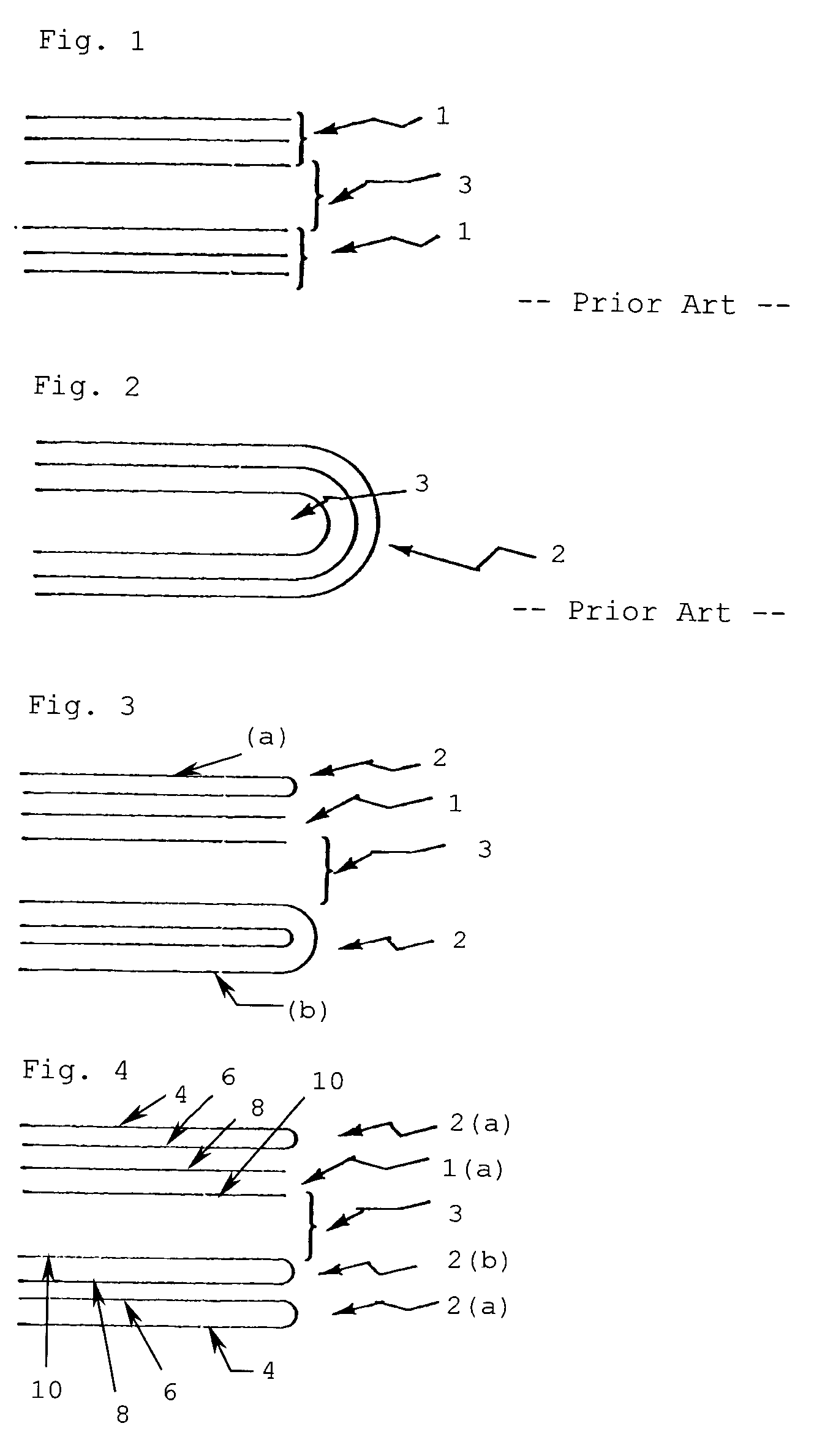Graphite fine carbon fiber, and production method and use thereof
a graphite and carbon fiber technology, applied in the direction of non-metal conductors, cell components, conductors, etc., can solve the problems of reducing the mechanical strength of the carbon fiber resin, deteriorating the repeat charge/discharge characteristics, and deteriorating the resin, etc., to achieve excellent dispersibility, excellent adhesion, and excellent thermal conductivity.
- Summary
- Abstract
- Description
- Claims
- Application Information
AI Technical Summary
Benefits of technology
Problems solved by technology
Method used
Image
Examples
example 1
[0092]Non-graphitized, fired vapor grown carbon fiber (60 g) which had undergone heat treatment at 1,200° C. in an argon atmosphere for one hour, the carbon fiber having an average diameter of 180 nm, an average length of 10,000 nm, and an aspect ratio of 556 and containing branched vapor grown carbon fiber in an amount of 30 mass %, and stainless-steel balls having a diameter of 10 mm were placed in a stainless-steel container (capacity: 2,000 cm3), and the carbon fiber was subjected to grinding treatment by use of a vibration mill (model: MB1, product of Chuo Kakohki Co., Ltd.) for 10 minutes. Thereafter, the thus-ground carbon fiber was subjected to heat treatment at 2,800° C. in an argon gas atmosphere for one hour. The thus-ground and graphitized carbon fiber was observed under a scanning electron microscope and a transmission electron microscope, micrographs of the carbon fiber were taken, and the lengths of 1,000 fibers were measured by use of a vernier caliper, to thereby ob...
example 2
[0095]Non-graphitized, fired vapor grown carbon fiber (60 g) which had undergone heat treatment at 1,200° C. in an argon atmosphere for one hour, the carbon fiber having an average diameter of 180 nm, an average length of 10,000 nm, and an aspect ratio of 556 and containing branched vapor grown carbon fiber in an amount of 30 mass %, and stainless-steel balls having a diameter of 10 mm were placed in a stainless-steel container (capacity: 2,000 cm3), and the carbon fiber was subjected to grinding treatment by use of a vibration mill (model: MB1, product of Chuo Kakohki Co., Ltd.) for 40 minutes. Thereafter, the thus-ground carbon fiber was subjected to heat treatment at 2,800° C. in an argon gas atmosphere for one hour. The thus-ground and graphitized carbon fiber was observed under a scanning electron microscope and a transmission electron microscope, micrographs of the carbon fiber were taken, and the lengths of 1,000 fibers were measured by use of a vernier caliper, to thereby ob...
example 3
[0098]Non-graphitized, fired vapor grown carbon fiber (60 g) which had undergone heat treatment at 1,200° C. in an argon atmosphere for one hour, the carbon fiber having an average diameter of 180 nm, an average length of 10,000 nm, and an aspect ratio of 556 and containing branched vapor grown carbon fiber in an amount of 30 mass %, and stainless-steel balls having a diameter of 10 mm were placed in a stainless-steel container (capacity: 2,000 cm3), and the carbon fiber was subjected to grinding treatment by use of a vibration mill (model: MB1, product of Chuo Kakohki Co., Ltd.) for 130 minutes. Thereafter, the thus-ground carbon fiber was subjected to heat treatment at 2,800° C. in an argon gas atmosphere for one hour. The thus-ground and graphitized carbon fiber was observed under a scanning electron microscope and a transmission electron microscope, micrographs of the carbon fiber were taken, and the lengths of 1,000 fibers were measured by use of a vernier caliper, to thereby o...
PUM
| Property | Measurement | Unit |
|---|---|---|
| outer diameter | aaaaa | aaaaa |
| BET specific surface area | aaaaa | aaaaa |
| aspect ratio | aaaaa | aaaaa |
Abstract
Description
Claims
Application Information
 Login to View More
Login to View More - R&D
- Intellectual Property
- Life Sciences
- Materials
- Tech Scout
- Unparalleled Data Quality
- Higher Quality Content
- 60% Fewer Hallucinations
Browse by: Latest US Patents, China's latest patents, Technical Efficacy Thesaurus, Application Domain, Technology Topic, Popular Technical Reports.
© 2025 PatSnap. All rights reserved.Legal|Privacy policy|Modern Slavery Act Transparency Statement|Sitemap|About US| Contact US: help@patsnap.com



